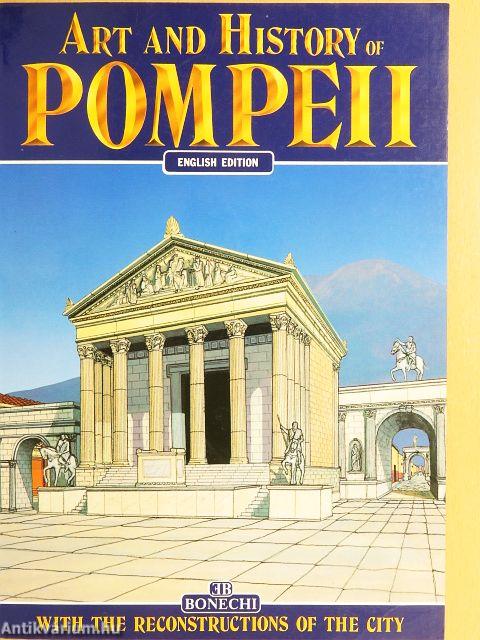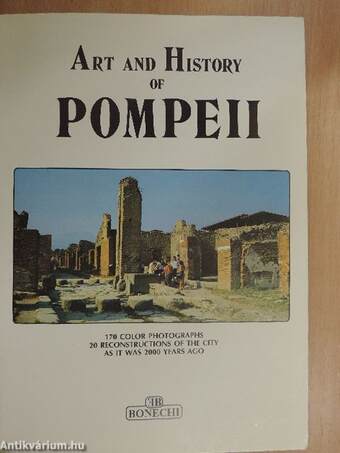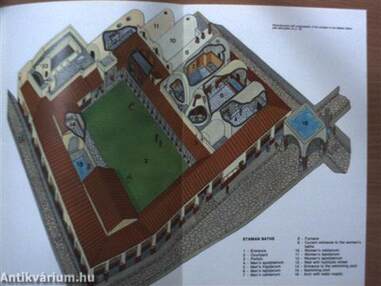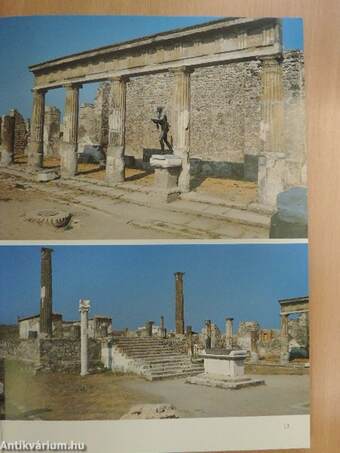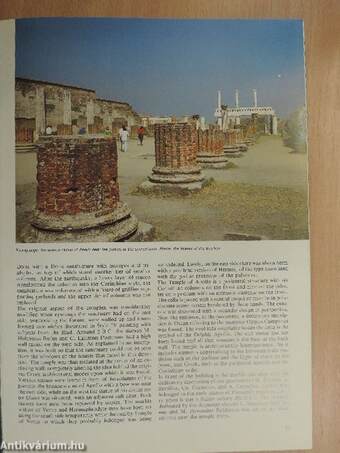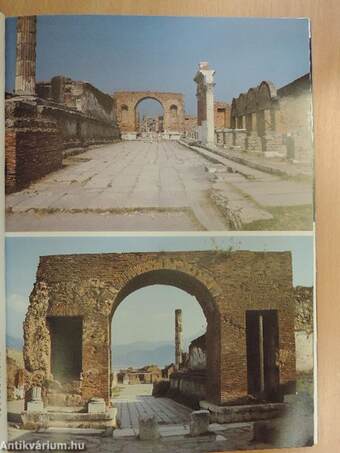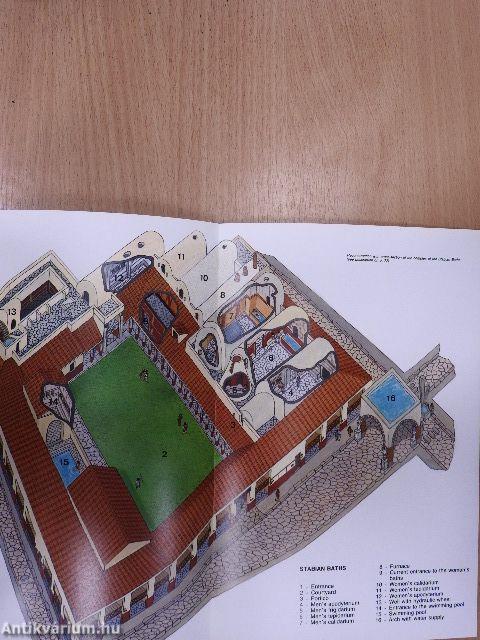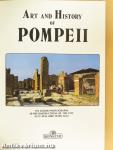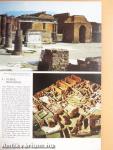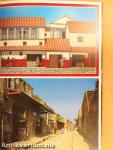1.067.053
kiadvánnyal nyújtjuk Magyarország legnagyobb antikvár könyv-kínálatát

VISSZA
A TETEJÉRE
JAVASLATOKÉszre-
vételek
Art and History of Pompeii
170 color photographs, 20 reconstructions of the city as it was 2000 years ago
| Kiadó: | Casa Editrice Bonechi |
|---|---|
| Kiadás helye: | Firenze |
| Kiadás éve: | |
| Kötés típusa: | Fűzött papírkötés |
| Oldalszám: | 123 oldal |
| Sorozatcím: | |
| Kötetszám: | |
| Nyelv: | Angol |
| Méret: | 28 cm x 20 cm |
| ISBN: | |
| Megjegyzés: | Színes fotókkal, illusztrációkkal, két kihajtható melléklettel. |
naponta értesítjük a beérkező friss
kiadványokról
naponta értesítjük a beérkező friss
kiadványokról
Előszó
In
INTRODUCTION
HISTORICAL SURVEY___
It is difficulí to say just how large any protohistoric set-tlement on the ridge of lava where Pompeii was to rise may have been. Not enough has been found... Tovább
Előszó
In
INTRODUCTION
HISTORICAL SURVEY___
It is difficulí to say just how large any protohistoric set-tlement on the ridge of lava where Pompeii was to rise may have been. Not enough has been found in the way of pottery ihat can be referred to the inhumation culture of the Iron age pit tombs (a. fossa, 9th-7th cent. B.C.), but in any case the lack of water here makes it unlikely that an inhabited center of any size existed before the middle of the 7th cent. B.C.
In the course of the 8th cent. B.C. Greek (Ischia and Cu-mae) and Etruscan colonization (Capua) in the territory of Campania stimulated the devetopment of Pompeii as a city around the area of the Forum. A point of encoun-ter for important trade routes, it became a clearing sta-tionfor traffic towards the hinterland. Up until about the middle ofthe 5th cent. B. C. the city was dominated polit-ically by the Etruscans, whose presence is verified by the finds of bucchero with Etruscan inscriptions. In the course of the 6th cent. B.C. the influence of the Greek
culture is alsó documented by the terracottas which deco-rated the Temple of Apollo, by important ceramics and architectural elements that were part of the so-catled Doríc Temple. During the 5th cent. B.C., after the defeat ofthe Etruscans by the Greeks of Cumae and the Syracu-sans in the battle of Cumae in 474, the entire fertile Cam-panian countryside was occupied by Samnite peoples from the mountain hinterlands, both as a result of mili-tary operations and through a slow gradual penetration and assimiiation with the local population. This was probably when Pompeii spread out over the entire lava ridge and was surrounded by walls. It was in the 4th cent. B. C. that Pompeii began its great úrban expansion along a grid layout, and the buildings began to be constructed in limestone. A new series of conflicts broke out in that same century between the Samnites who had become city dwellers and new waves of Samnite peoples from the mountains. The intervention of Romé played a determining role and at the end of these struggles, known as Samnite wars (343-290 B.C.), Romé
the picture, a 19th-century reconstruction of the Temple of Venus in Pompeii.
POMPEl
TKMI'I.K IIK \ i'.WS Vissza
Tartalom
TABLE OF CONTENTS
Introduction
Historical survey
The Styles of painting
Domestic architecture
Sculpture
Mosaics
Plan of the Forum
Plan of the House of the Vettii
Plan of the House of the Faun
Plan of the Villa of Mysteries
I PART
II PART
III PART
IV PART
Amphitheater
Antiquarium
Arch of Caligula
Arches on the north side of the Forum
Bakery of Modestus
Basilica
Baths, Forum
Baths, Stabian
Building of Eumachia
Buildings, public, on the south side
of Forum
Election slogans
FORUM
General background
Forum, triangular
Fullonica Stephani
Gladiators Barracks
Holconius, Intersection of
Horrea or Forum Olitorium
House of the Ceii
House of the Centennial
House of the Diadoumeni
House of the Dioscuri
House of the Faun
House of the Gilded Cupids
House of Great Fountain p. 96
3 House of Iulia Félix " 66
6 House of Menander " 50
7 House of M. Lucretius " 89
9 House of M. Obellius Firmus " 93
9 House of Octavius Quartio or
21 Loreus Tiburtinus " 64
97 House of Paquius Proculus or
104 Cuspius Pansa " 63
123 House of Sallust " 120
10 House of the Silver Wedding " 90
38 House of the Tragic Poet " 117
72 House of Trebius Valens " 62
94 House of Venus in the Shell " 66
68 Lupanar " 84
12 Macellum " 30
110 Necropolis of Porta Nocera " 71
34 Odeion or Small Theater " 46
118 Palestra, Large " 71
18 Pistrinum of the Vicolo Torto " 87
112 Porta di Ercolano " 121
72 Porta Marina " 10
27 Sanctuary of the Lares Publici " 30
Temple of Apollo " 12
25 Temple, Doric " 40
61 Temple of Fortuna Augusta " 108
Temple of Isis " 48
21 Temple of Jupiter " 33
40 Temple of Vespasian " 28
54 Thermopolium of Asellina " 60
46 Thermopolium with Lararium " 59
38 Via dell'Abbondanza " 38
36 Via degli Augustali " 86
53 Via Consolare " 119
92 Via dei Sepolcri " 121
54 Via Stabiana " 82
96 Villa of Diomede " 122
104 Villa of Mysteries " 123
94 Villa, suburban " 10
Témakörök
- Idegennyelv > Idegennyelvű könyvek > Angol > Művészetek > Építészet
- Idegennyelv > Idegennyelvű könyvek > Angol > Művészetek > Fotóművészet
- Idegennyelv > Idegennyelvű könyvek > Angol > Művelődéstörténet
- Idegennyelv > Idegennyelvű könyvek > Angol > Helytörténet
- Idegennyelv > Idegennyelvű könyvek > Angol > Történelem > Egyéb
- Művelődéstörténet > Civilizációtörténet > Európai
- Művelődéstörténet > Kultúra > Története
- Helytörténet > Külföldi > Városok
- Művészetek > Építészet > Várostörténet > Külföldi
- Művészetek > Építészet > Idegen nyelv > Angol
- Művészetek > Fotóművészet > Albumok > Külföldi
- Művészetek > Fotóművészet > Idegen nyelv > Angol
- Művészetek > Építészet > Építészettörténet > Külföldi
- Történelem > Idegennyelvű > Angol
- Régészet > Általános régészet, antropológia > Ókor
- Idegennyelv > Idegennyelvű könyvek > Angol > Régészet > Általános régészet, antropológia > Ókor
- Idegennyelv > Idegennyelvű könyvek > Angol > Régészet > Kontinensek szerint > Európa
- Régészet > Kontinensek szerint > Európa > Egyéb
- Történelem > Régészet > Általános régészet, antropológia > Ókor
- Történelem > Régészet > Kontinensek szerint > Európa > Egyéb



